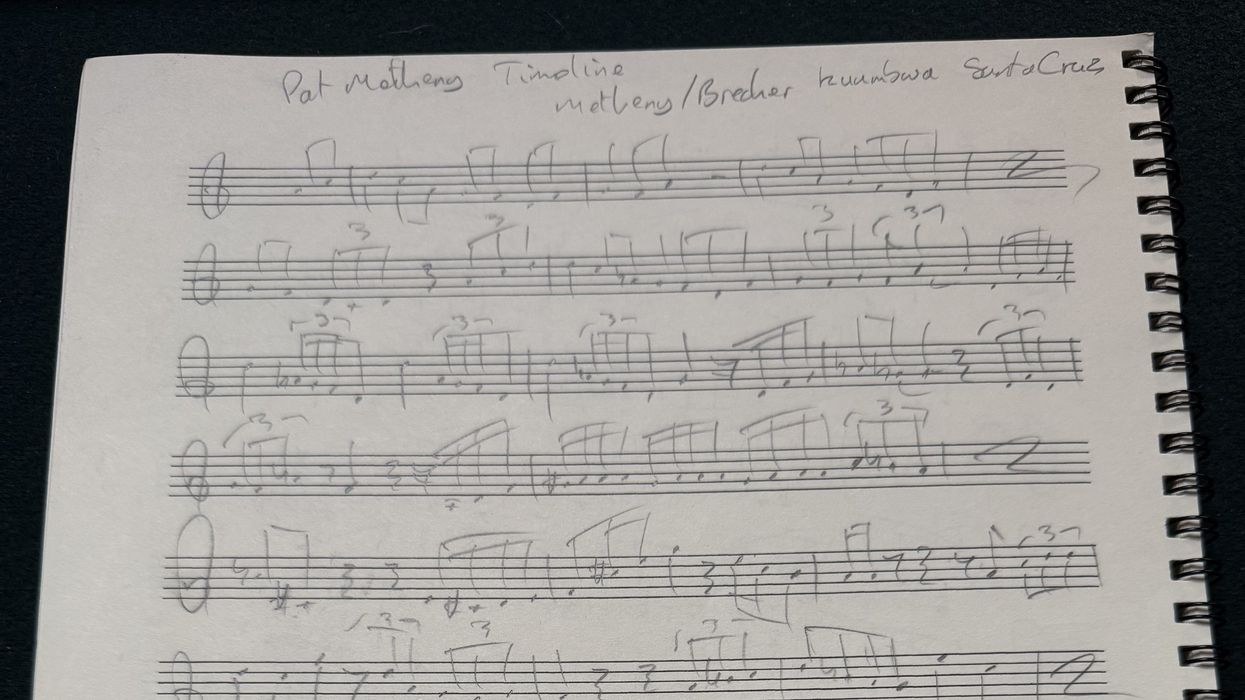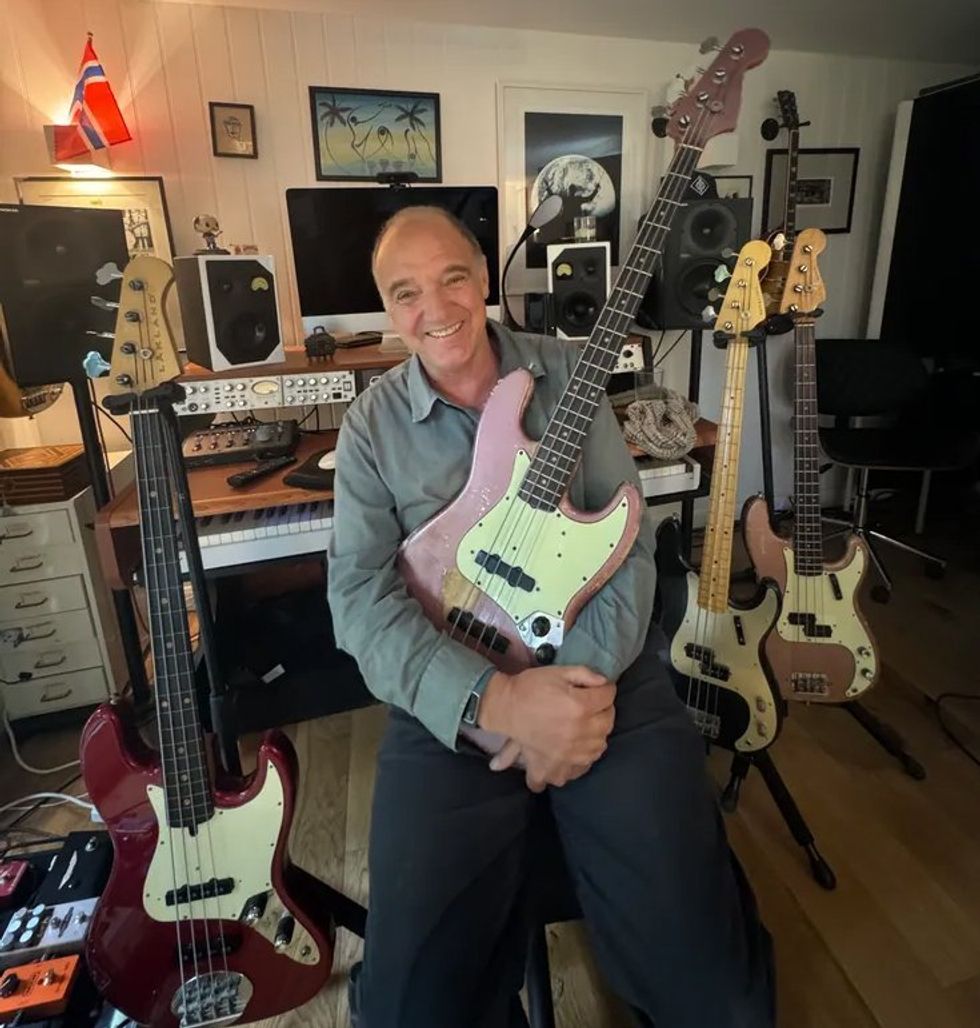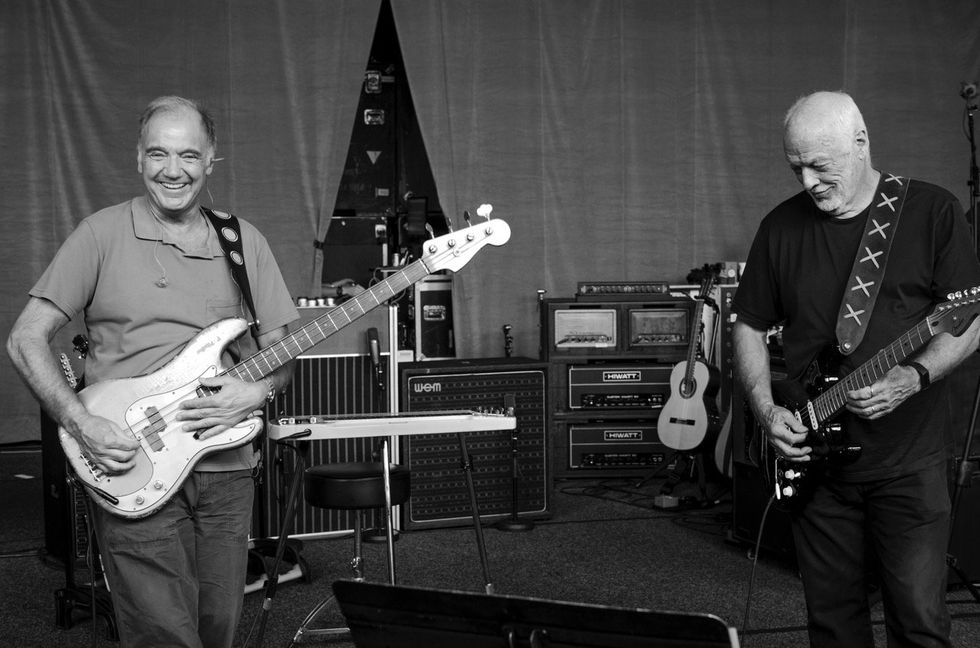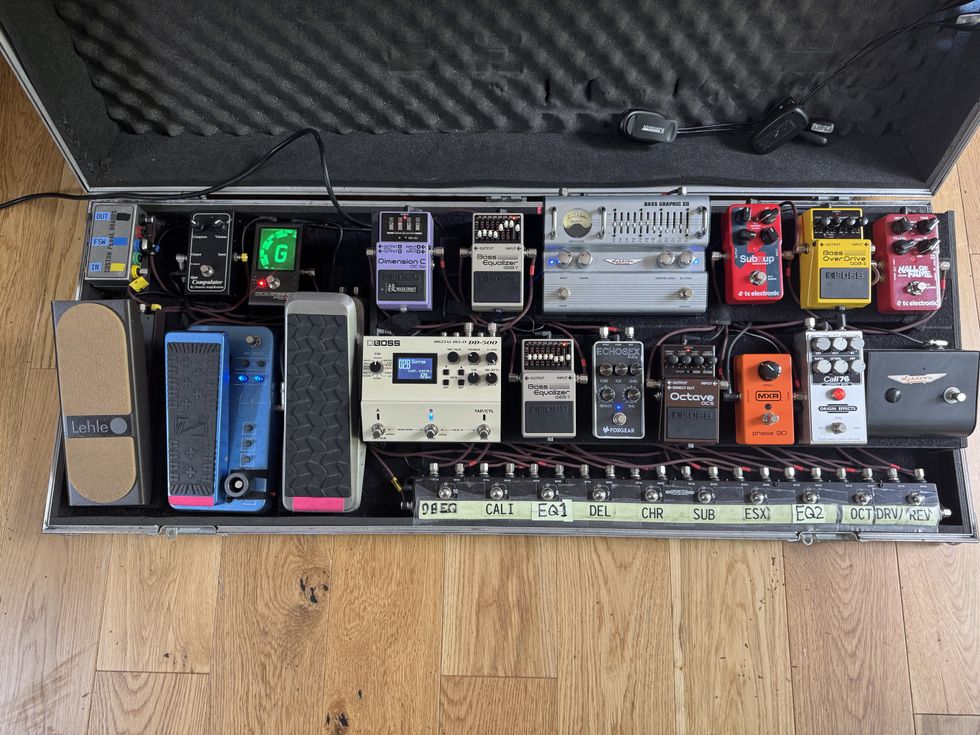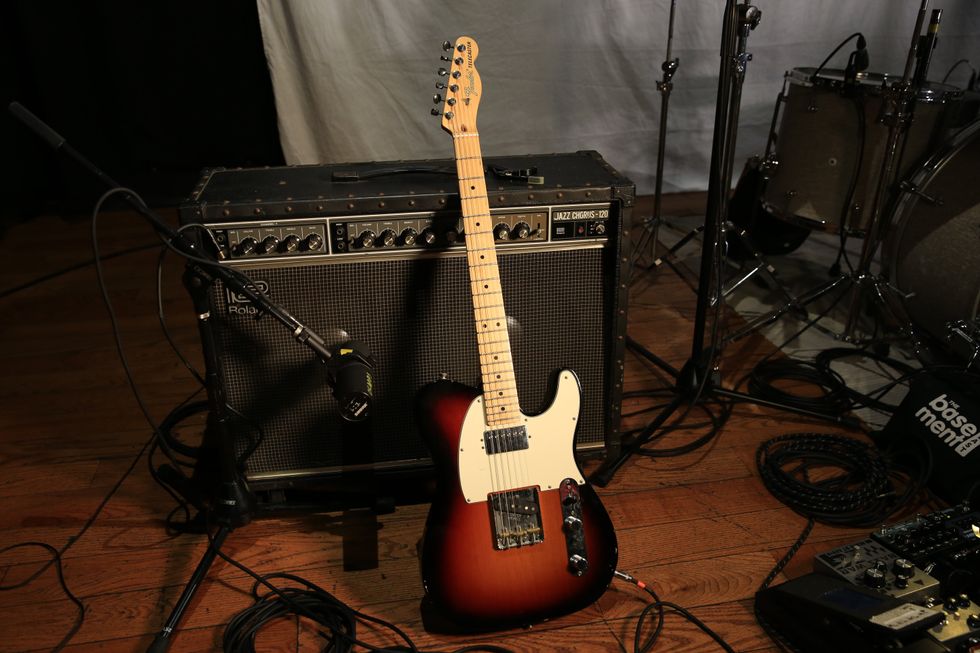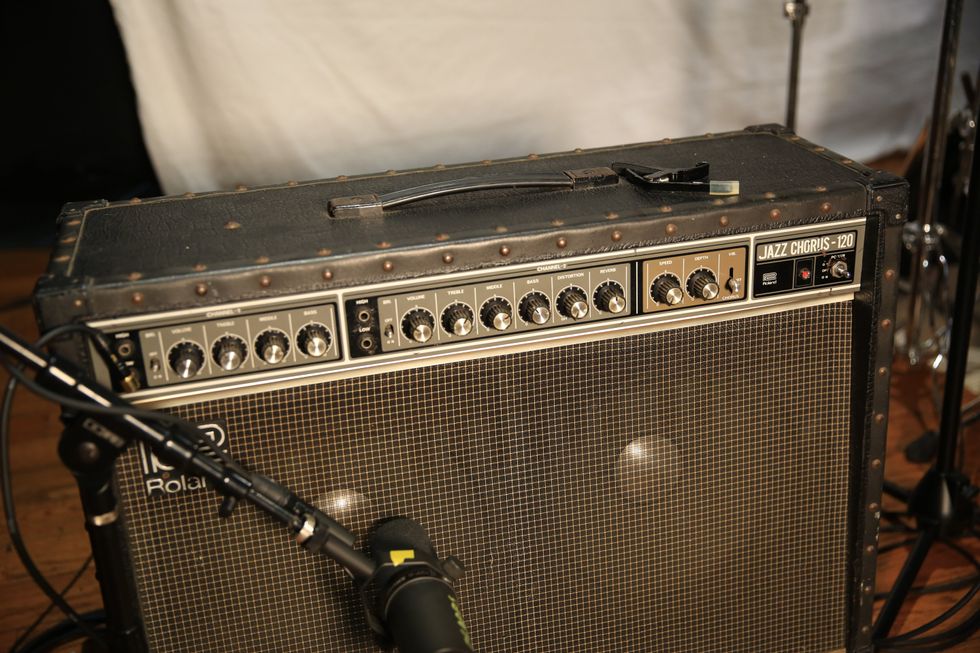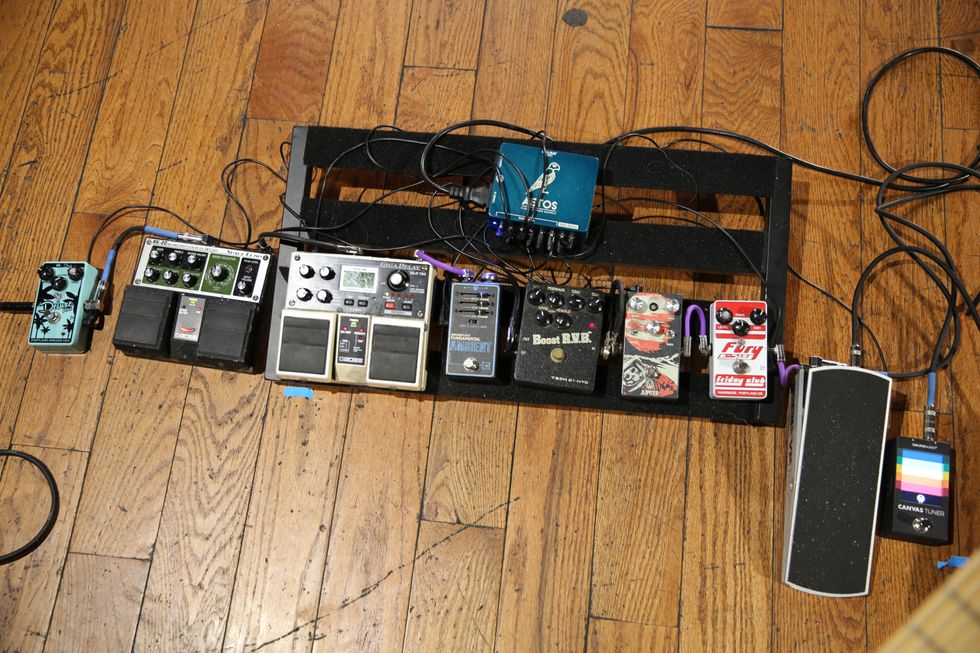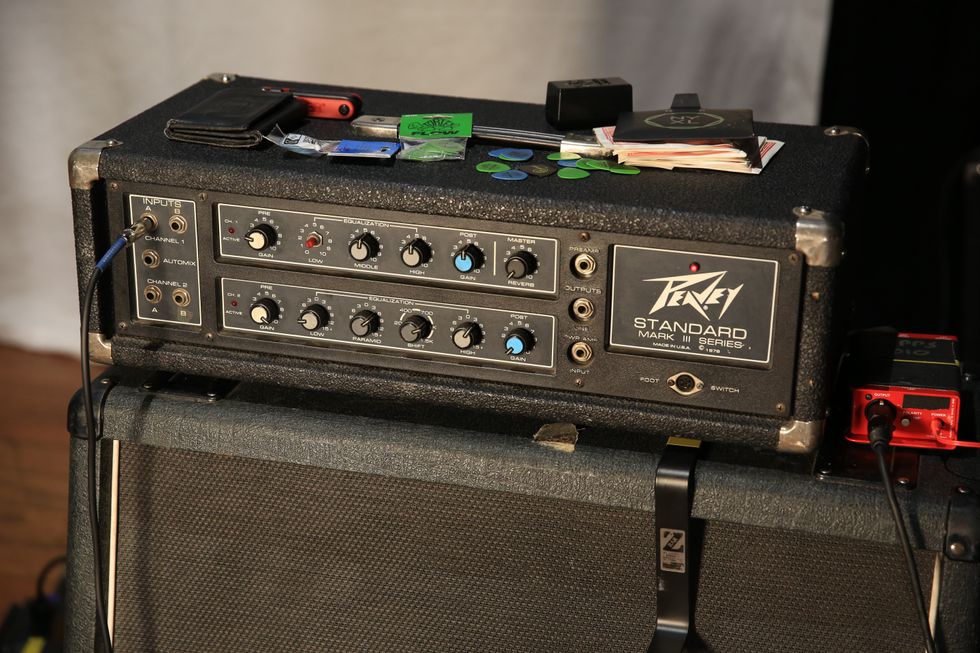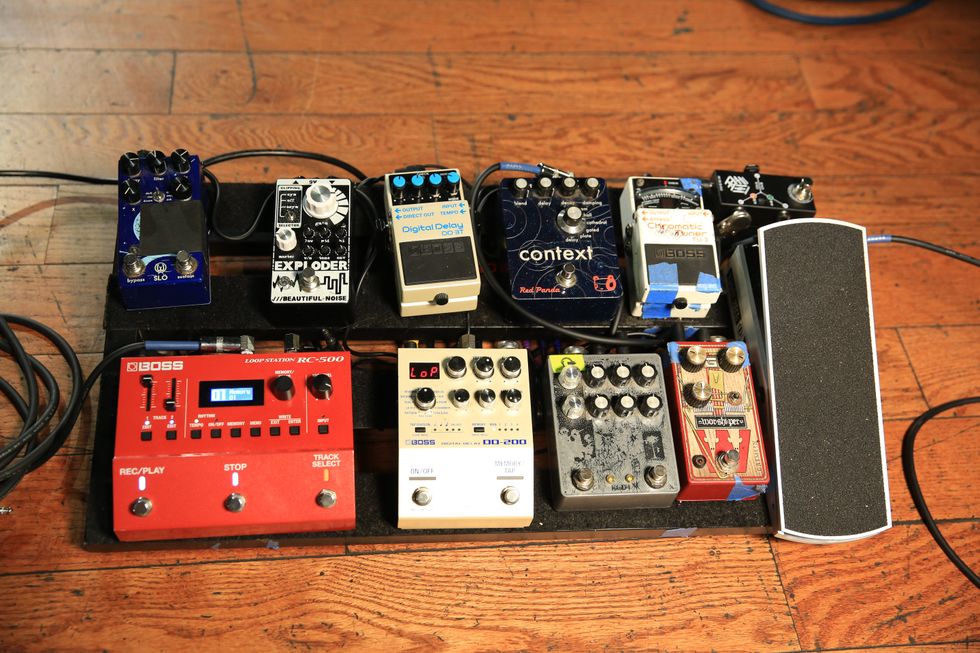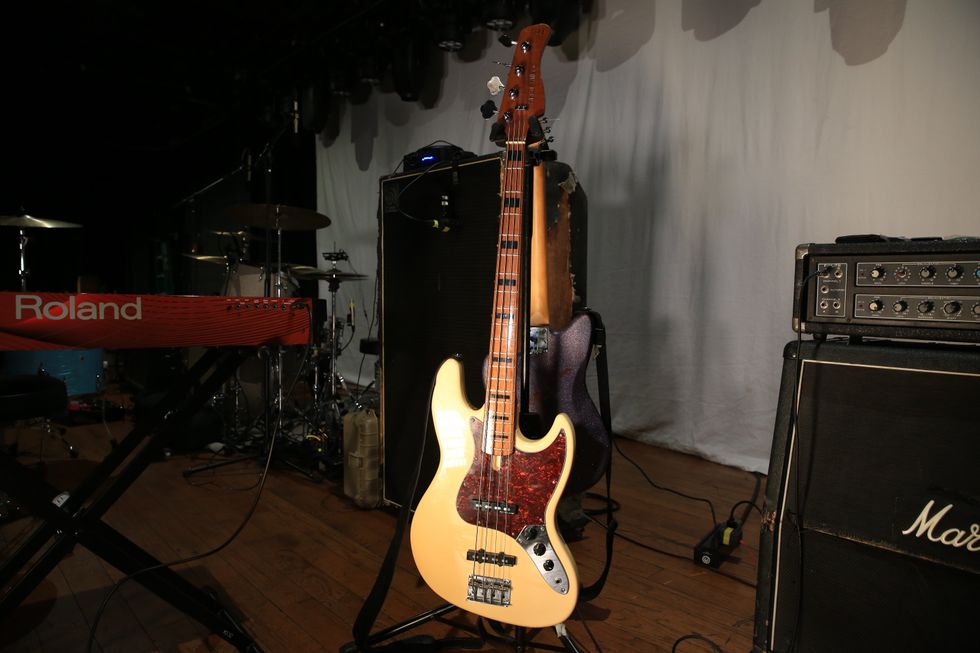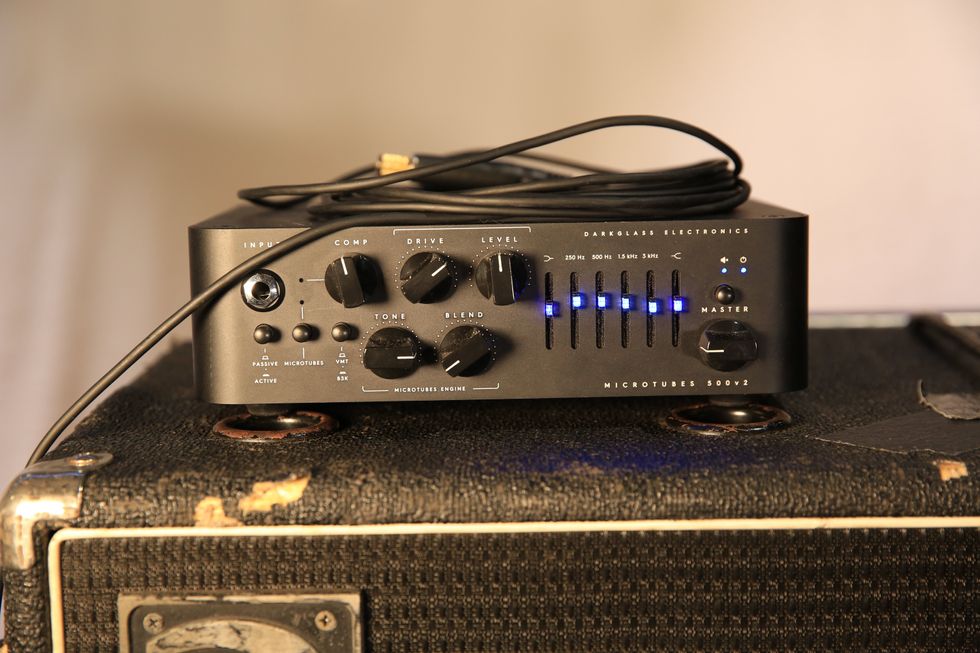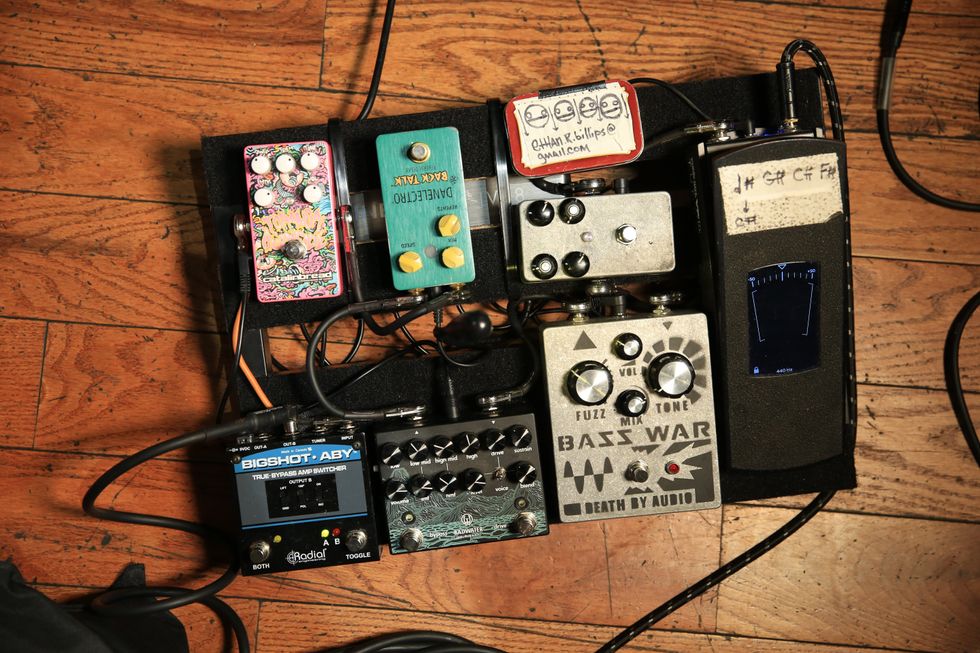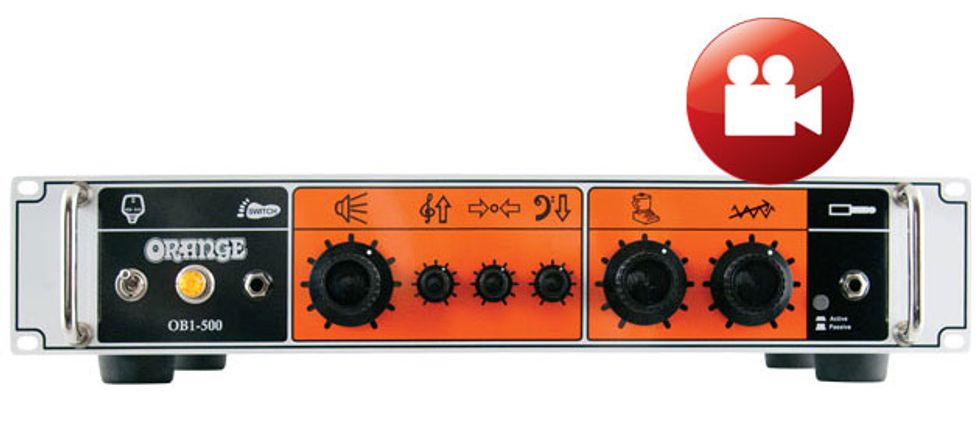
Like 1960s British fashion, Orange amplification has always stood out from the crowd. And the lively looks of their cabinets and heads are a physical manifestation of the Orange sound. Orange’s new OB1 Series was inspired by bassists who use two amps to get their clean and dirty tones, and to achieve this dual-prong approach, the streamlined amps integrate class-AB technology with a flexible overdrive section. There is a 300-watt model in the series, but our attention was directed at the more powerful OB1-500.
Dig if You Will, the Pictures
One of the ways some bassists produce thick, distorted tones is by splitting their signal and running into two amps—one clean head and an overdriven guitar amp. The OB1-500 is inspired by this philosophy, yet packs everything into a single 2U rackmount chassis that also stands alone on burly rubber feet.
When you plug into the 500-watt OB1-500, it splits your bass signal into two separate paths: One amplifies the clean sound, the other seasons it with upper-harmonic distortion. Gain and blend controls balance the intensity and level of the distortion before the combined signal is sent through a simple but robust EQ.
Visually, the OB1-500 reflects Orange’s familiar styling. The amp is suited in white powder coat, painted in the company’s colors, and crested with their iconic logo. The front panel is labeled with clever and easily discernable images like the footprint indicating the footswitch jack and a speaker symbol representing the volume. Creativity points go to Orange for the blend and gain knobs, respectively signified by a kitchen blender and a snake and arrow.
Orange Jam
In my home studio, I paired the OB1-500 with an Epifani UL3 112 cabinet and three different basses—a Sadowsky Will Lee 4-string, a Fender Precision, and a Ritter R8 5-string. The OB1-500 was designed to deliver beastly bass tones, but one of the first things that actually caught my ears was the pleasing sound produced by the clean section. It didn’t matter what bass I used: The amp conveyed a warm, defined voice that was responsive to my touch.
The EQ is an excellent problem-solver and small adjustments produced noticeable results. Bassists who rely on bridge-pickup sounds will appreciate the level of thickness and punch the bass control can add, as well as the mid attenuator’s ability to dial in different dimensions of snarl. P-style players will appreciate how the OB1-500’s treble dial works in conjunction with their instrument’s tone control to transform the timbre from edgy to brooding.

Active instruments aren’t exempt from the benefits of the OB1-500’s EQ. The Ritter responded nicely to tonal tweaks from the amp, but what was equally impressive was how the OB1-500 could be left flat and not color the sounds shaped by the Ritter’s sophisticated onboard preamp.
It’s easy to plug in and play with the OB1-500, but I recommend spending some quality time experimenting with the gain and blend knobs prior to performance. Doing so will allow you to find the right mix of harmonic saturation and original signal to create tones from gutsy roars to synth-like sizzles—qualities I enjoyed on soloed neck pickups and the Precision.
Ratings
Pros:
Very satisfying spectrum of drive tones. Great clean settings. Well voiced EQ.
Cons:
Might not appease disciples of classic tones. A bit pricey.
Tones:
Ease of Use:
Build/Design:
Value:
Street:
$899
Orange OB1-500
orangeamps.com
On top of that, I was able to sculpt a grinding clang with the active Sadowsky that’ll make your older brother pull out his Rush records. There is overdrive aplenty available with this amp—from sublime to downright nasty—and the manner in which it interacts with the EQ offers multiple tonal personalities.
All the aforementioned characteristics shined onstage when I ran the amp at much louder volumes. Impressively, the OB1-500 stays ultra clean at high levels. Orange was wise to install an active/passive pad switch that was a major factor in keeping things from getting too hairy. This was evident when I paired the amp with a Bergantino HD212 and plugged in the Ritter R8. The rig combined warmth and presence while moving major air. I was able to lay a solid foundation with a horn band, and the amp transmitted Prestia-like 16th-notes with impressive immediacy.
I further explored the OB1-500 at a local jam night by pairing it with an ’80s Peavey 4x10 and working the Sadowsky over rock tunes both sublime and absurd. The band smiled in unison when I dialed in a sound that came close to nailing Geddy’s aggressive tone on Permanent Waves, though this quickly sparked several other attempts at Rush classics. I found that the OB1-500 was more than adept at handling a wide spectrum of musical styles.
The Verdict
It’s relatively new, but Orange’s OB1-500 should already be considered one of the company’s standout offerings. It has an abundance of both clean and crass bass tones on tap, and while it might not completely placate the tube obsessed, the amp’s all-analog signal path is a welcome alternative to today’s class-D frenzy. Some might balk at the steep price, but the OB1-500’s tonal rewards outstrip many of its contemporary counterparts. If you’re seeking a responsive, powerful amp that gives a finger (or two, if you’re in the U.K.) to modern amp design, the OB1-500 is certainly worth a spin.
Watch the Review Demo:







![Rig Rundown: AFI [2025]](https://www.premierguitar.com/media-library/youtube.jpg?id=62064741&width=1245&height=700&quality=70&coordinates=0%2C0%2C0%2C0)












 Shop Scott's Rig
Shop Scott's Rig





